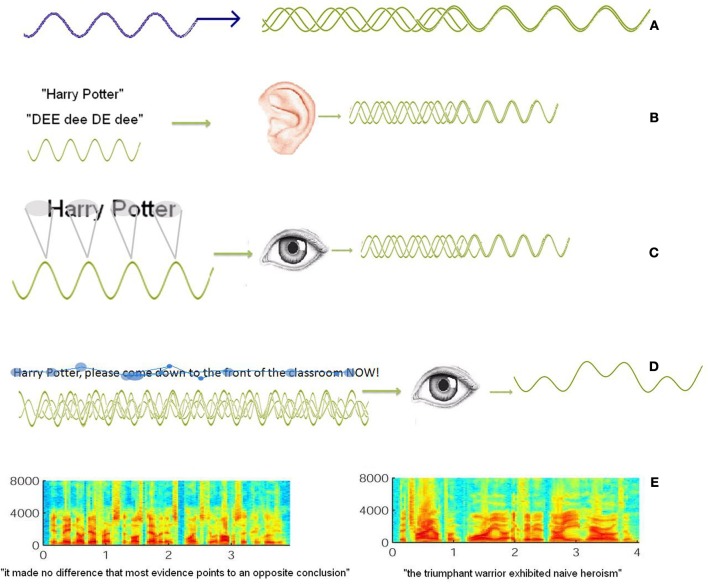Figure 1.
(A) Is an illustration of how oscillatory signals—either external, or internal, can entrain a cortical oscillation, such that networks of neurons synchronize to oscillate at a critical frequency. It has also been suggested that the rhythmic nature of spoken language, such as “Harry Potter” in “dee's” (Goswami, 2011) can entrain an oscillatory cortical signal (B). Moreover, the sequential spatial coding of words when reading lends itself to temporal sampling at much the same frequencies (C). However, (D) is an example of how when reading, the unpredictable nature of fixations, saccades and regression might make it difficult to generate a single stable oscillatory signal, which in turn might make it difficult to entrain an associated oscillatory signal in the visual cortex. Here, the blue dots represent fixations of varying length and regressions. Similarly, when listening to speech, sentences have different spectral energy, (E) the sentence on the left has a spectral signature that is much more regular than that on the right. Nevertheless, Luo and Poeppel (2007) demonstrated entraining in the auditory cortex to both sentences (reproduced with permission from Luo and Poeppel (2007), supplementary material. Elsevier).

